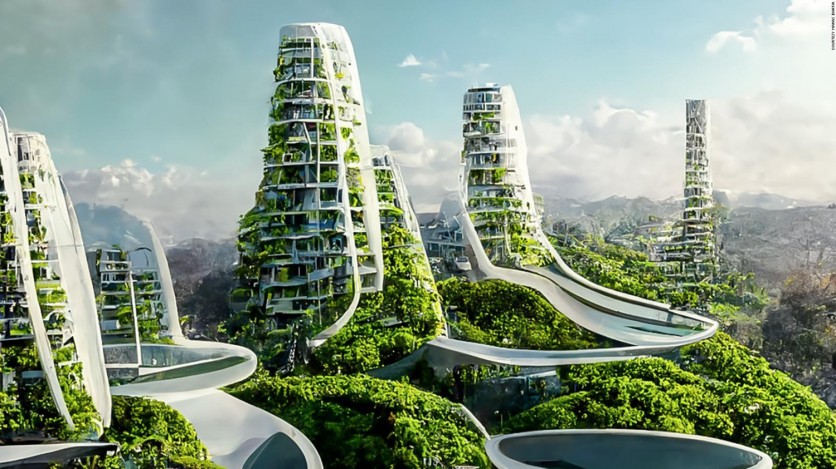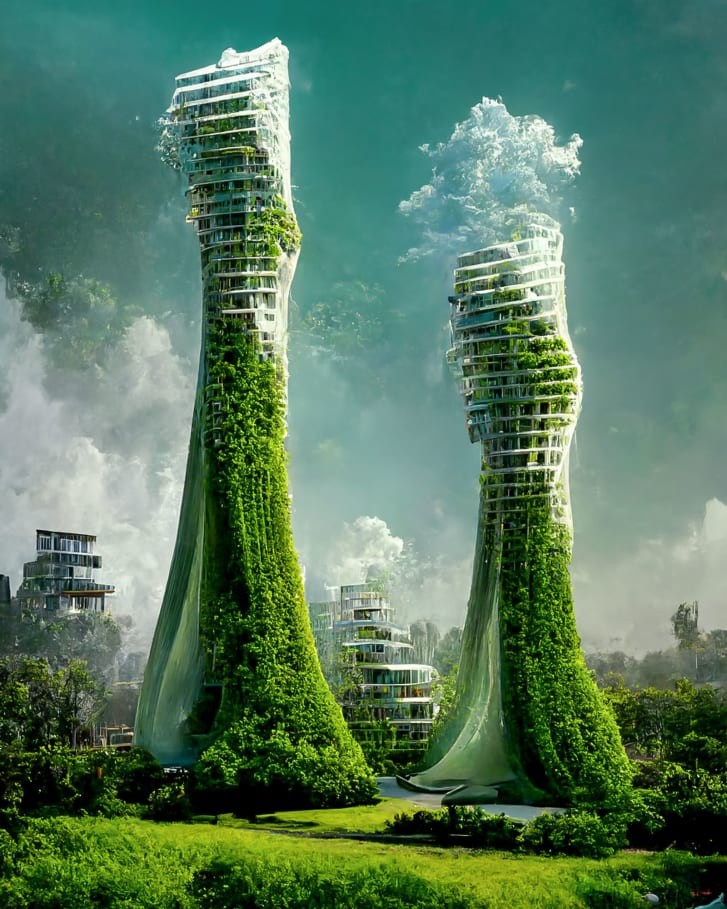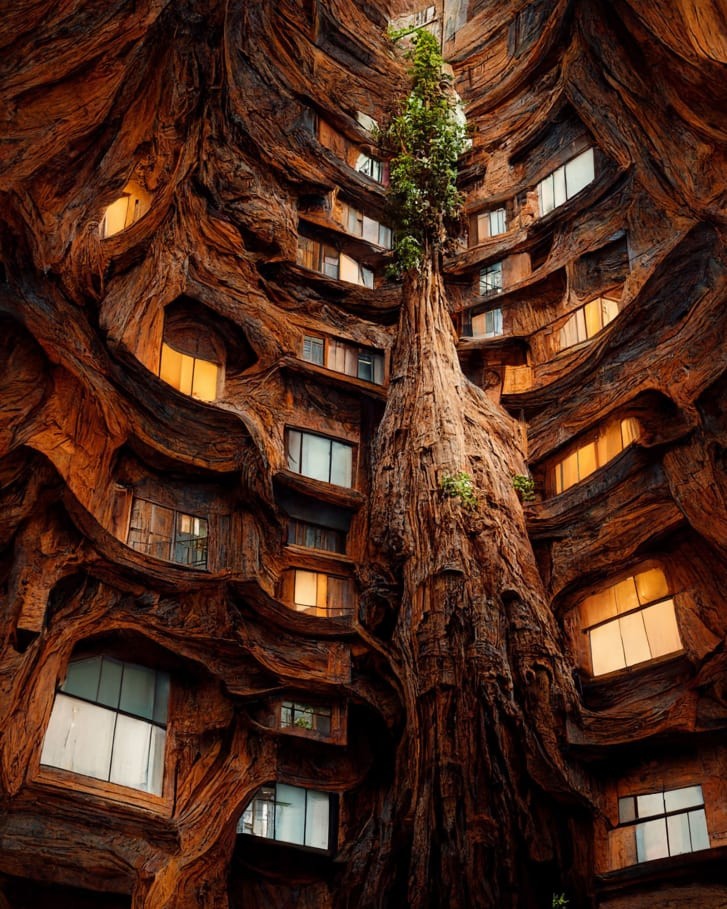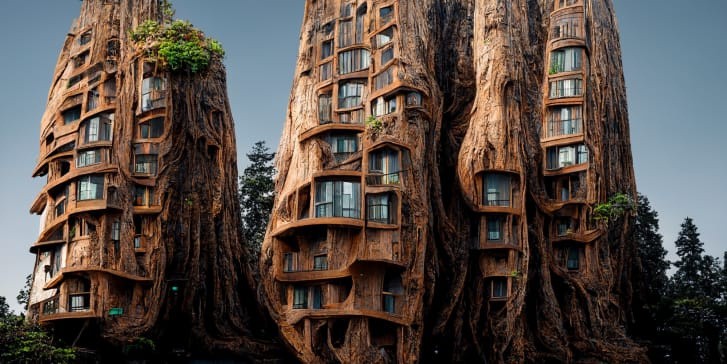Manas Bhatia offers a radical vision of the future, one where residential buildings are "air purification towers" covered in lushes of green.
The architect and computational designer from New Delhi brought the concept to life in a set of intricate visuals. His projected structures are shown towering up over a futuristic city, their curving forms taking inspiration from natural shapes.
However, it is worth noting that Bhatia was not the one who designed these visuals by hand. In fact, all he needed to do was type a few phrases to generate these otherworldly designs.


An AI Designs the Future
Bhatia used the artificial intelligence imagery program, Midjourney, to create intricate images based on written instructions for his conceptual piece, "AI x Future Cities."
The architect's AI designs were featured on CNN and were first reported by designboom.
Midjourney generated a set of digital graphics using text descriptions that included terms like "futuristic towers," "utopian technology," "symbiotic," and "bioluminescent material," which Bhatia then improved by tweaking the prompts.
According to Bhatia, creating one of the artworks can take up to 20 minutes. He improved his descriptions over 100 times per project, changing and adding to the text until he got the desired results. He then used Photoshop to tidy up the pictures.
Bhatia envisions a future in which structures are built of living materials in another project titled "Symbiotic Architecture." Using words like "giant" and "hollowed," he created pictures of what he dubbed a "utopian future" in which redwood-sized trees are fashioned into apartments.

The design was influenced by Hyperion, which is a 380-foot-tall redwood in California that is reputed to be the tallest living tree in the world.
He also drew inspiration from his everyday job at the Indian architectural firm Ant Studio, whose projects include renovating buildings with fresh facades to promote natural ventilation and lower energy use.

Are AI Imaging Apps Going Too Far?
Concerns regarding originality and artistic integrity have been highlighted by the growing popularity of AI imaging technologies such as OpenAI's DALL-E 2 and Google Research's Imagen, which has boomed into popularity.
Using Midjourney to create a futuristic, Renaissance-inspired artwork, Colorado game creator Jason M. Allen controversially won $300 at an art contest last month.
While several social media users and other artists objected to Allen's AI-generated artwork, the designer insisted that his entry, which took him more than 80 hours to produce, qualified as a piece of digital art.
But for Bhatia, AI is merely another tool in his arsenal. He said that art is entirely open to interpretation.
"And an artist can use any kind of tool there is to create art. Anyone can use AI, but they won't be able to achieve as good a result as a creative person."
Related Article: Can AI Create Real Art? A Look At One Of The Most Pensive Areas Of Today's Tech
This article is owned by Tech Times
Written by Joaquin Victor Tacla




